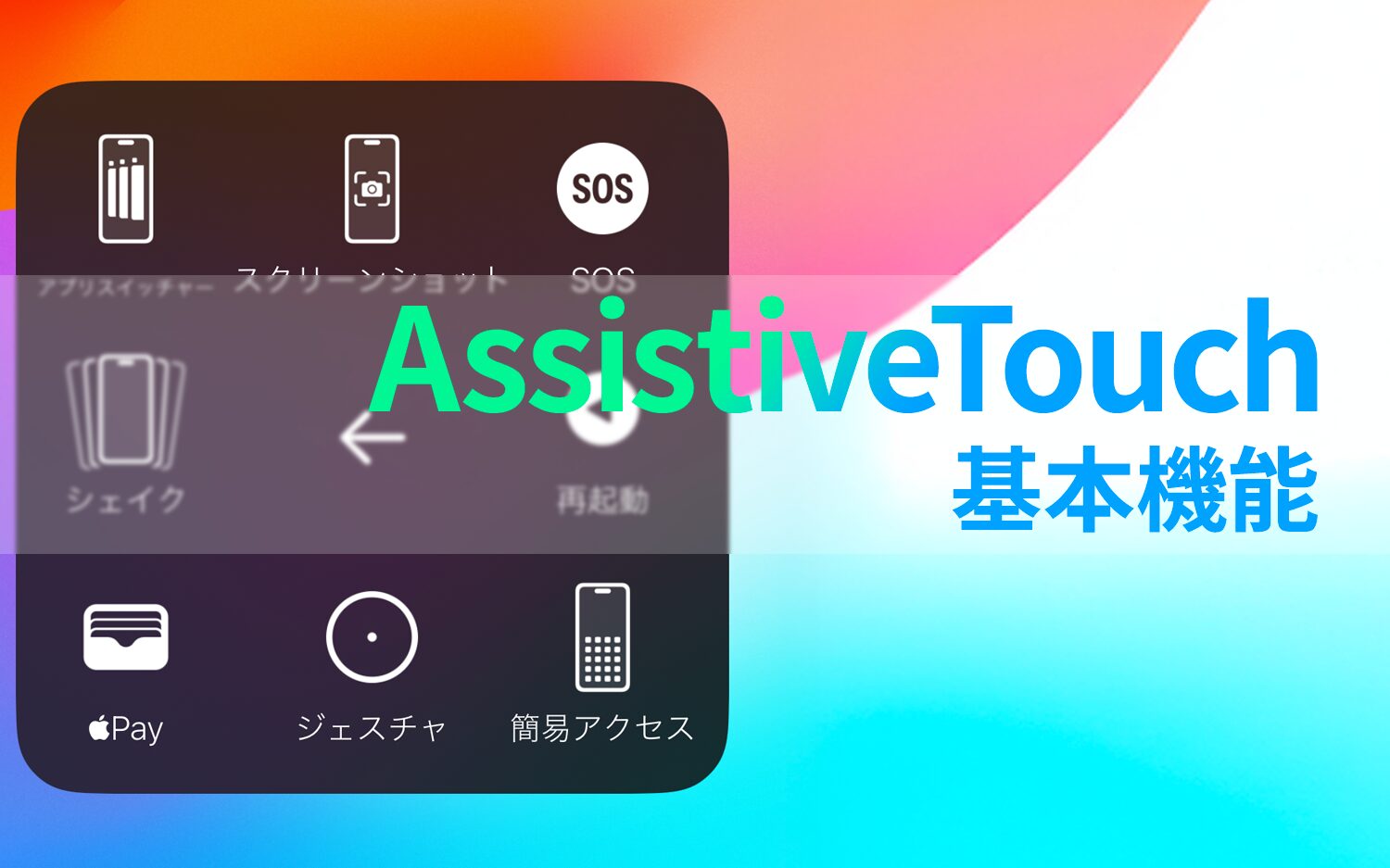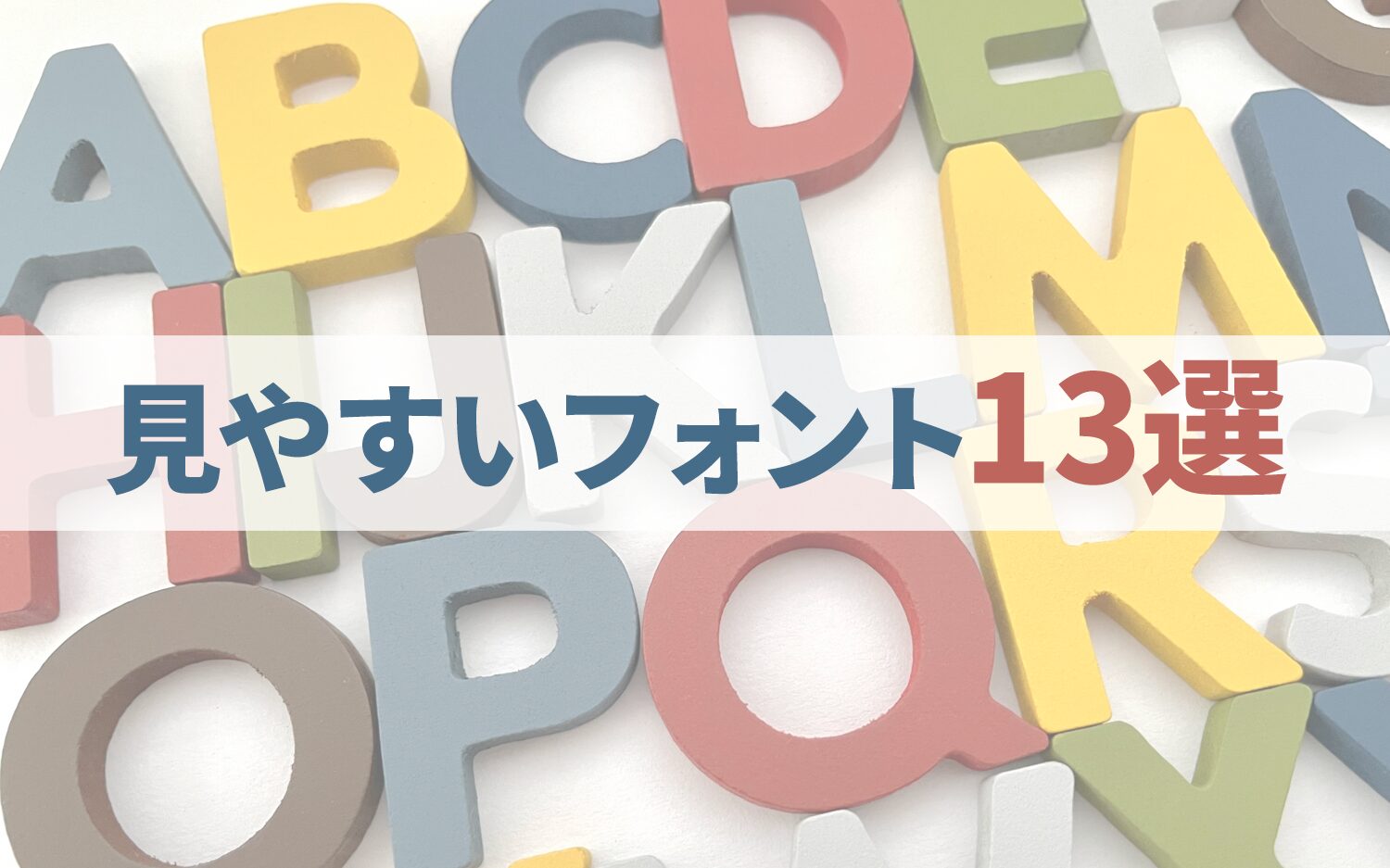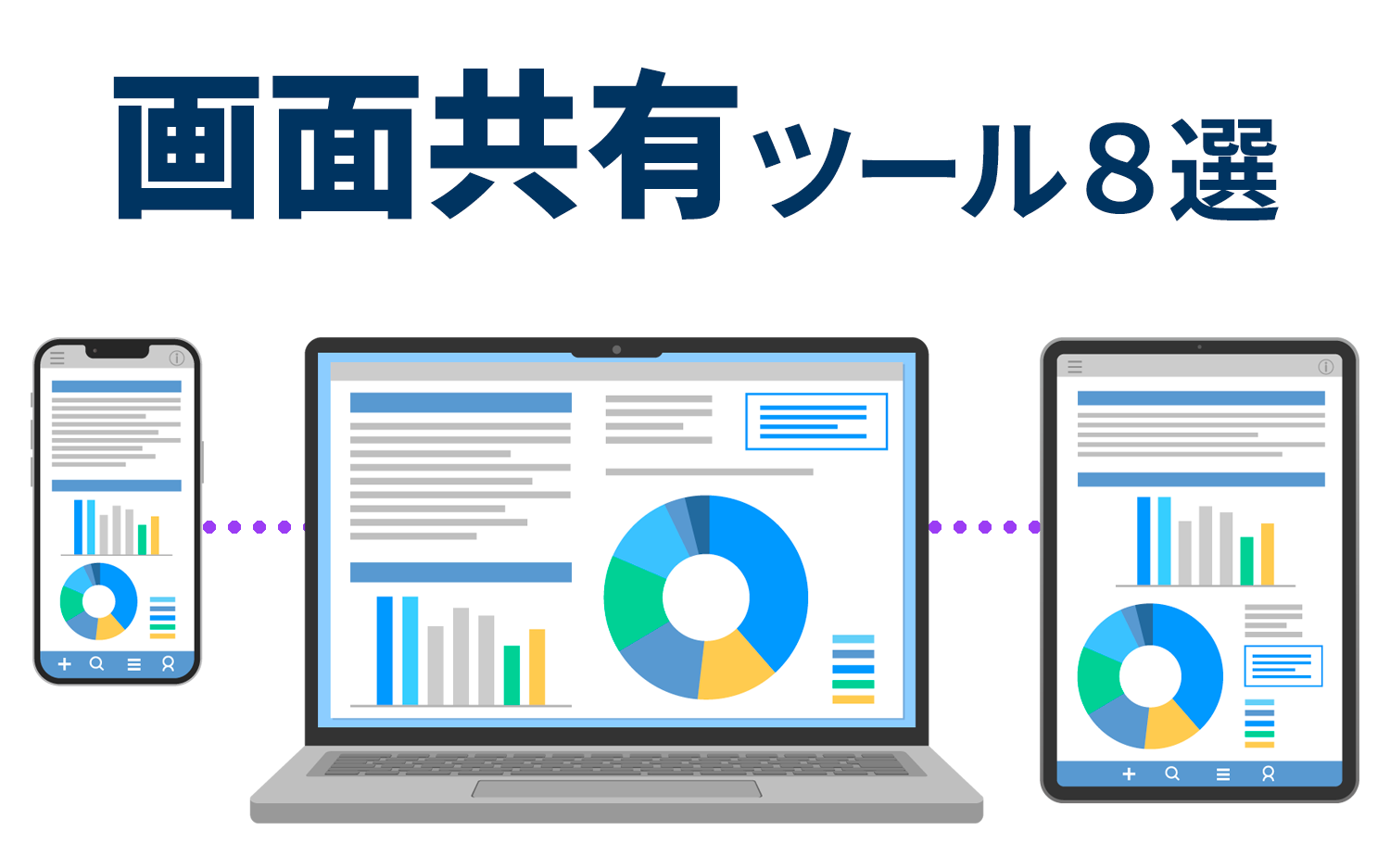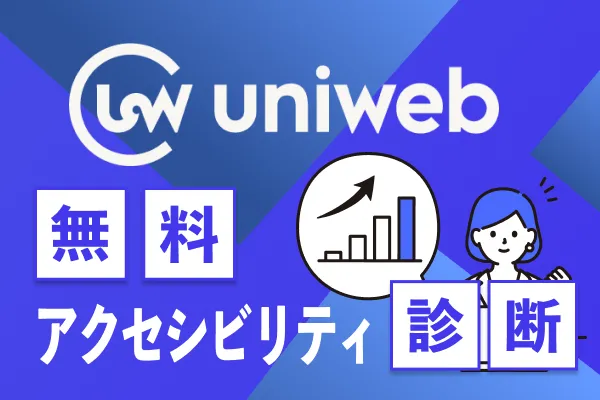European Accessibility Act is a common EU rule for accessibility
2025/04/30
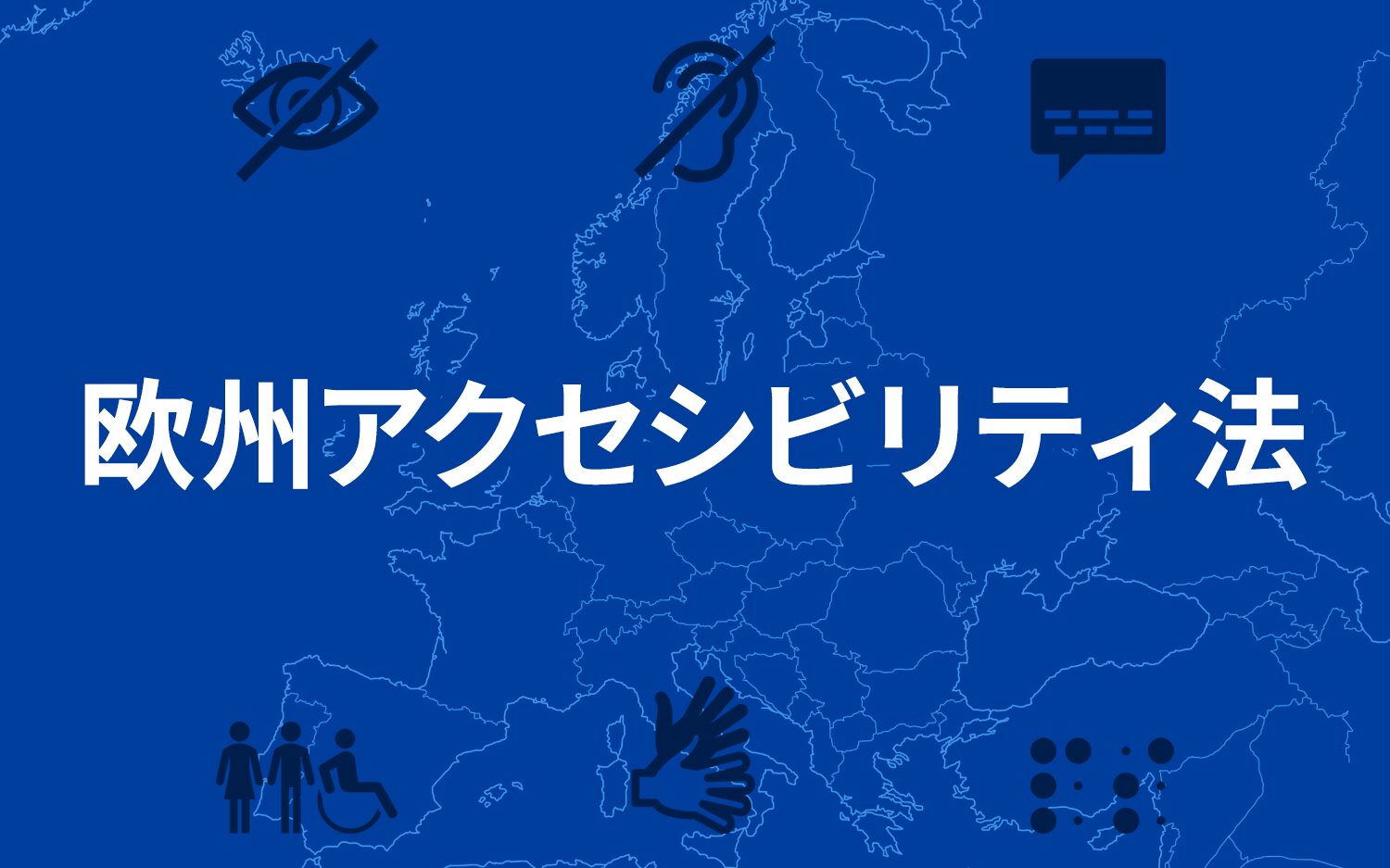
European Accessibility Act (EAA)was to create an environment in which all people, including people with disabilities and the elderly, have equal access to products and services,It is a comprehensive EU directive*.
Against the backdrop of an aging population and a growing population of people with disabilities, the EU is promoting policies that emphasize social inclusion, and ensuring accessibility has become an important issue.
In addition, in the move toward the elimination of discrimination against people with disabilities and the creation of a digital single market,The need to unify standards that have varied from one Member State to anotherwas growing.
Against this background, the European Accessibility Act was adopted in 2019 as an EU Directive (Directive (EU) 2019/882),National legislation is mandatory for all member states.
In the European Accessibility Act,Accessibility support is required primarily for the following products and services
| Target Category | concrete example | Main Accessibility Requirements |
|---|---|---|
| Electronic Communication Services | Mobile telecommunications and fixed-line telephone services | Speech-to-Speech support, UI for the visually impaired, and alternative |
| Media related equipment | Television receivers, set-top boxes | Subtitles, voice guidance, usability enhancements |
| e-commerce | Online store, electronic contracting services | Keyboard operation support, color-independent design, WCAG 2.1 compliant |
| Banking related | ATMs, Internet banking, POS terminals | Audio output, screen magnification, visual/aural UI |
| E-books | E-reader devices, reader apps | Text-to-speech, font adjustment, structured table of contents |
| mass transit | Automatic ticket vending machines and information display systems | Both visual and auditory guidance, screen readout, and operability |
| Emergency call service | EU emergency calls such as 112 | Support for non-voice reporting methods and real-time communication |
| General purpose PC software/hardware | OS, PC, smartphone, etc. | Operation aids, screen reader support, configuration change functions |
This article will provide an overview of the European Accessibility Act, examples of initiatives by leading companies, and a detailed explanation of how it differs from the "Act on Elimination of Discrimination against Persons with Disabilities" in Japan.
For companies considering doing business in the EU market, EAA compliance is an unavoidable issue, so be sure to read this article to learn more about the requirements.
The European Accessibility Act is officially known as the'Directive (EU) 2019/882 of the European Parliament and of the Council of the European Union of 17 April 2019 on accessibility requirements for products and services'For the sake of convenience, this article uses the terms "law" and "this law".
Table of Contents
- 1 Seven Fundamentals of European Accessibility Law
- 1.1 Basic Information 1) What is the European Accessibility Act?
- 1.2 Basic Information 2) What type of company is involved?
- 1.3 Basic Information (3) What are the products and services covered?
- 1.4 Basic Information (4) Is it sufficient to support only websites?
- 1.5 Basic Information (5) Are there any standards that should be referenced when responding to the request?
- 1.6 Basic Information 6) What are the risks of violating the law?
- 1.7 Basic Information (7) There is time before the enforcement, but should we prepare now?
- 2 Subjects and requirements in the European Accessibility Act
- 3 5 Corporate Cases of Compliance with European Accessibility Laws
- 3.1 Case 1: Microsoft (U.S.) improves accessibility in Windows and Office products
- 3.2 Case 2: "SAP (Germany)" complies with WCAG 2.1 standards for application products
- 3.3 Case 3: Apple (U.S.) provides a wide variety of accessibility functions in iOS and macOS.
- 3.4 Case 4: IKEA (Sweden) promotes accessibility support online and offline
- 3.5 Case Study 5: "Adobe (U.S.A.)" helps improve accessibility of PDF documents
- 4 Similarities and differences with the "Law for the Elimination of Discrimination against Persons with Disabilities" in Japan
- 5 UniWeb, an accessibility tool to support compliance with the European Accessibility Act
- 6 Conclusion
Seven Fundamentals of European Accessibility Law
In June 2025, the European Accessibility Act (EAA) will come into force,Comprehensive EU rules requiring the creation of an environment of equal access for all in the provision of products and services.
For Japanese companies, it is also essential to comply if they are developing EC, software, electronic devices, etc. in the EU.
This section first describes seven basic pieces of information to help you understand the fundamentals of the European Accessibility Act.
Basic Information 1) What is the European Accessibility Act?
It is a common EU rule that aims to ensure equal access to products and services for all, including the elderly and people with disabilities,Accessibility is mandatory for certain products and services.
Basic Information 2) What type of company is involved?
All companies offering products and services on the European marketEven if a company is based in Japan, it is required to comply in principle if it operates an e-commerce site or software within the EU.
Basic Information (3) What are the products and services covered?
This includes electronic communication services, e-books, smartphones, ATMs, ticket vending machines, POS terminals, and e-commerce sites.Not only the physical product, but also the accompanying applications and support systemSee the table below for details.
Basic Information (4) Is it sufficient to support only websites?
The Accessibility Act does not only apply to websites,Comprehensive support, including the product itself, mobile apps, instructions and support measuresare required.
Basic Information (5) Are there any standards that should be referenced when responding to the request?
The technical requirements are「EN 301 549」and is based on EU standards, especially for web and apps.WCAG 2.1 AA.The basic principle is compliance with the
Basic Information 6) What are the risks of violating the law?
by the supervisory authority of each member state.Possibility of administrative measures such as fines and corrective ordersIn addition, CE marking (*) may not be approved and sales within the EU may be restricted.
Penalties in EU member states for violations under the European Accessibility Act include, for example
France
Private companies that do not meet web accessibility standards are,50,000 Euroand failure to publish an accessibility statement or multi-year accessibility plan,Additional fines of €25,000 may be imposed for related violations。
Italy
Failure to meet accessibility requirements,Up to 5% of annual salesA fine of up to $500,000 may be imposed.
Germany
For the sale of products or services that do not meet accessibility requirements,Up to 100,000 eurosIn addition, a fine of up to $500,000 may be imposed,In one case, a fine of €10,000 was imposed for failure to certify accurate information on the accessibility of products and services。
Spain
EUR 30,000 for minor violations, EUR 150,000 for serious violations, and EUR 600,000 for very serious violationsand the amount of the fine will vary depending on the degree of the offense. and for repeat offenders,The same conduct that resulted in the penalty may be prohibited for up to two years。
Citation: Top Penalties for EAA Non-compliance(Level Access)
A self-declaration mark that indicates "the product complies with EU standards for safety, health, environmental protection, etc." when the product is sold in EU member countries.
Basic Information (7) There is time before the enforcement, but should we prepare now?
Because it takes a certain period of time from understanding the requirements to implementation and verification,It is important to establish a response system as early as possible.It is essential to ensure adequate preparation time, especially for companies that require multilingual support and in-house training.
Japanese companies that are considering doing business in Europe should be sure to understand these basic information.
Subjects and requirements in the European Accessibility Act
Next, please see below for a summary of the main target categories and examples of the accessibility support required for each.
◆List of Subjects and Requirements in the European Accessibility Act
| Target Category | concrete example | Main Accessibility Requirements |
|---|---|---|
| Electronic Communication Services | Mobile telecommunications and fixed-line telephone services | Speech-to-Speech support, UI for the visually impaired, and alternative |
| Media related equipment | Television receivers, set-top boxes | Subtitles, voice guidance, usability enhancements |
| e-commerce | Online store, electronic contracting services | Keyboard operation support, color-independent design, WCAG 2.1 compliant |
| Banking related | ATMs, Internet banking, POS terminals | Audio output, screen magnification, visual/aural UI |
| E-books | E-reader devices, reader apps | Text-to-speech, font adjustment, structured table of contents |
| mass transit | Automatic ticket vending machines and information display systems | Both visual and auditory guidance, screen readout, and operability |
| Emergency call service | EU emergency calls such as 112 | Support for non-voice reporting methods and real-time communication |
| General purpose PC software/hardware | OS, PC, smartphone, etc. | Operation aids, screen reader support, configuration change functions |
The European Accessibility Act requires certain products and services offered in the EU to be accessible, with the aim of ensuring that everyone, regardless of disability, has equal access to products and services.
A wide range of products and services related to daily life and business, such as electronic communications, e-books, e-commerce sites, ATMs, etc., are covered in the scope,It goes beyond just digital products and websites to the applications, user support, and contracting processes that accompany them.
Also, the requirements required in each product or service,It is defined in detail from multiple perspectives, including visual, auditory, and operability.In many cases, simple display changes or additional functions are not enough.
Therefore, companies are required to correctly understand in advance to what extent their products and services will be affected.
Reference: Directive (EU) 2019/882 of the European Parliament and of the Council、European accessibility act
Now next,Examples of overseas companies that are actually complying with the European Accessibility Act will be presented.
5 Corporate Cases of Compliance with European Accessibility Laws
Here we present representative examples of companies that are in the process of complying with the European Accessibility Act, which should serve as a concrete reference for companies considering compliance with this law.
Case 1: Microsoft (U.S.) improves accessibility in Windows and Office products
Microsoft is committed to improving the accessibility of its products and services in the European market and is meeting the requirements of the European Accessibility Act.
The company has made its Windows and Office products accessible to all users, including the visually impaired, by providing screen reader support and optimizing keyboard navigation.
In addition,Accessibility Conformity Report (ACR) in accordance with the technical requirement "EN 301 549".The accessibility status of the product is clearly indicated.
Reference: Accessibility Conformance Reports(Microsoft)
Case 2: "SAP (Germany)" complies with WCAG 2.1 standards for application products
SAP is committed to improving accessibility in its enterprise software products to meet the requirements of the European Accessibility Act.
We design our web-based and mobile applications to comply with WCAG 2.1 standards and provide a user-friendly environment for all users.
In addition,Support for WCAG 2.2 in "Composable Storefront for SAP Commerce Cloudis underway and an update is scheduled for the first quarter of 2025.
Reference: SAP Commerce Cloud - European Accessibility Act Support (SAP Community Page)
Case 3: Apple (U.S.) provides a wide variety of accessibility functions in iOS and macOS.
Apple provides accessibility features in its iOS, macOS, and other products to accommodate diverse users, including users with visual and hearing impairments.
These features are part of an effort to improve product accessibility and meet the requirements of the European Accessibility Act.
Apple also under the Digital Services Act (DSA) of the European Union,We require developers who distribute apps in the EU to provide contact information (address, phone number, email address).
This information is published on platforms such as the App Store and Apple Books to make it easier for consumers to identify the provider.
Reference: Manage European Union Digital Services Act trader requirements(Apple Developer)
Case 4: IKEA (Sweden) promotes accessibility support online and offline
IKEA is stepping up its efforts to improve accessibility in the digital realm.
For websites and mobile apps, we are working to improve technical quality by optimizing keyboard navigation, customizing colors, and promoting designs that are easy for everyone to use, as well as using accessibility checking tools and other tools.
In addition,Vantaa stores in Finland pilot live navigation tools for the visually impairedIn addition, we are promoting accessibility support in real stores, such as by providing voice guidance in multiple languages.
Reference: Accessibility (IKEA)、IKEA Unveils Vision for Digital Accessibility and Inclusion(HFBusiness)
Case Study 5: "Adobe (U.S.A.)" helps improve accessibility of PDF documents
To help companies comply with the European Accessibility Act (EAA), Adobe offers a variety of tools to improve the accessibility of PDF documents.
Adobe Acrobat accessibility checker and automatic tagging servicemakes it easier to create documents that meet standards such as screen reader compatibility.
In addition,Guided Actions to facilitate accessibility without specialized knowledgeThe EAA also provides an environment that enables companies to provide content that meets EAA requirements.
Reference: Build in accessibility – and be ready for business in Europe.(Adobe)
Next, we will summarize the characteristics of the European Accessibility Act and the differences in its response through a comparison with the Japanese domestic system, the "Law for the Elimination of Discrimination against Persons with Disabilities".
Similarities and differences with the "Law for the Elimination of Discrimination against Persons with Disabilities" in Japan
Learn about the European Accessibility Act,How does this differ from Japan's Disability Discrimination Law?"Some of you may be wondering.
In fact, in Japan, due to the 2024 amendment,Private companies are now obligated to "provide reasonable accommodation" for accessibility.The response is being strengthened.
Both the European Accessibility Law and the Law for the Elimination of Discrimination against Persons with Disabilities enforced in Japan aim to "create an environment in which everyone has equal access.
However,There are some significant differences in terms of the structure of the system, the scope of coverage, and the strength of the obligations required of companies。
Please see the table below for a summary of the similarities and differences between the two systems.
◆"Commonalities" between the European Accessibility Act and the Disability Discrimination Act
| Item | Content. |
|---|---|
| Purpose | Realization of a socially equitable environment for all people, regardless of disability |
| Accessibility Standards | In information accessibility, including web and apps,WCAG 2.1(mainly AA) as the compliant standard. |
| Target Technical Areas | Websites, apps, etc.Accessibility support for information acquisition methodsis emphasized (*But EAA is limited to electronic products and services, while Japan covers a broader range of social activities). |
◆"Differences" between the European Accessibility Act and the Disability Discrimination Act
| Item | European Accessibility Act (EAA) | Law for the Elimination of Discrimination against Persons with Disabilities (Japan) |
|---|---|---|
| Nature of the Law | EU Directive (mandatory legislation in member states) | National laws (applicable to government agencies and private operators) |
| Application Scope | Sold or offered in the EUSpecific products and services(PCs, ATMs, e-commerce sites, etc.) | Government agencies in Japan andAll businesses (public or private) |
| Obligations | Companies offering products and services in the European market | All companies doing business in Japan (especially obligatory for government agencies) |
| Guarantee of Effectiveness | CE marking, by regulatory authoritiesCorrection orders and fines | Focus is on administrative guidance and advice; "reasonable accommodation" is the basis for private operators |
| Enforcement of response | Strong (mandatory, with market exclusion and penalties for non-compliance) | Relatively weak (duty of effort, limited litigation risk) |
The European Accessibility Act and Japan's Law for the Elimination of Discrimination against Persons with Disabilities both share the same goal of realizing a society that is equally accessible to all.
In particular, both systems are designed to support accessibility in the means of obtaining information, such as websites and applications.Compliant with WCAG, an international standardIn addition, there are many areas of overlap in terms of practice.
On the other hand,There is a clear difference between the two in terms of the structure of the system and its impact on companies.
The European Accessibility Act mandates accessibility for certain electronic products and services,Failure to conform to these standards may result in the inability to obtain CE marking and the possibility of being barred from the market, making the product extremely legally binding.。
In contrast, the Law for the Elimination of Discrimination against Persons with Disabilities requires more comprehensive social considerations, and although its scope of application is broad, it is particularly applicable to private companies.Relatively flexible measures based on "provision of reasonable accommodationis being sought.
Thus, it is essential to understand that although the names may be similar, there are significant differences in the legal framework and requirement levels on which responses are premised, in order to accurately assess risks and formulate response policies.
In addition, for the Law for the Elimination of Discrimination against Persons with Disabilities,The following article explains in more detail.Please take a look at this article as well as this one.
Related Articles:Key Points of the 'Revision of the Disability Discrimination Elimination Law' Explained in 10 Minutes
UniWeb, an accessibility tool to support compliance with the European Accessibility Act
With the implementation of the European Accessibility Act (EAA), companies are required to make their websites and digital services accessible.Web Accessibility Tool 'UniWeb'is a solution that supports rapid and effective response.
UniWeb has features to meet the needs of users with visual and hearing impairments, the elderly, and users with temporary disabilities,Just add a line of code to your website to instantly provide accessibility features.This allows for a rapid response without requiring specialized knowledge or extensive development resources.
The main features include the following accessibility functions
◆Accessibility features provided by UniWeb (partial)
・Font size adjustmentFont size can be changed to make it easier for the user to read.
・Color contrast adjustmentColor contrast is adjusted so that users with characteristic color vision can perceive information accurately.
・Page Structure DisplayThe structure of the page is clear and easy to navigate.
These features are only part of the UniWeb's wide variety of functions.The "pink humanoid icon" appears in the lower right-hand corner of this article.to experience the accessibility features of the UniWeb, we invite you to try them out.
'UniWeb' isIt conforms to the domestic JIS standards and the international WCAG (Web Content Accessibility Guidelines).In addition, the system automatically responds to updates in standards, ensuring that it always meets the latest standards.
UniWeb is a powerful tool to help companies achieve compliance with European accessibility laws.
Conclusion
The European Accessibility Act is,Unified accessibility standards, which had differed among EU member states,This is an important regulation that requires accessibility support for the provision of products and services in the EU market.
For Japanese companies, however, the differences in legal systems and business practices can create technical and human challenges when dealing with these issues,By taking a systematic approach, we will be able to provide products and services that are accessible to all users.The
Compliance with the European Accessibility Act cannot be achieved overnight, but systematic efforts will enable us to provide products and services that are accessible to all users.
-
Contact Us
-
Request Info
-
Free Trial
-
Partner System


